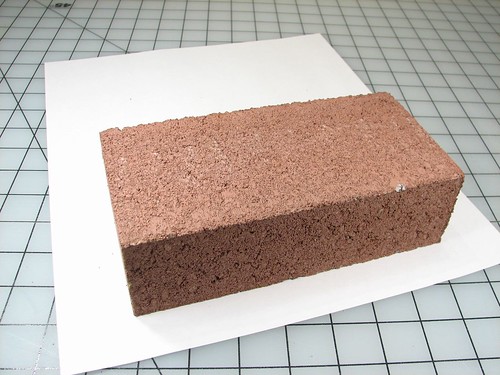 We said that it’s simple, and it is: it’s a brick wrapped in a piece of paper.
If you don’t have a couple of bricks (and we didn’t), they turn out to be cheap at hardware and home improvement stores. These are “cement bricks” — red dyed cement– and cost about $0.25 each. Wrapping them up keeps them from scratching up your shelves and books, but also from depositing cement debris everywhere.
We said that it’s simple, and it is: it’s a brick wrapped in a piece of paper.
If you don’t have a couple of bricks (and we didn’t), they turn out to be cheap at hardware and home improvement stores. These are “cement bricks” — red dyed cement– and cost about $0.25 each. Wrapping them up keeps them from scratching up your shelves and books, but also from depositing cement debris everywhere.
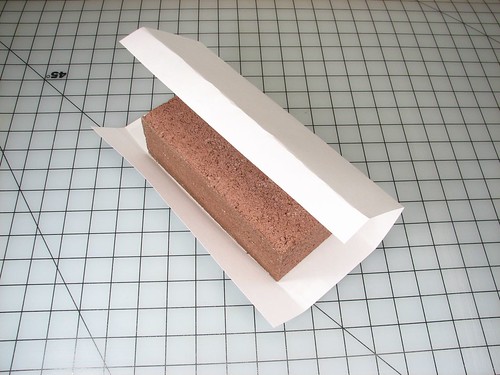 Crease the edges of the paper along the length of the brick.
Crease the edges of the paper along the length of the brick.
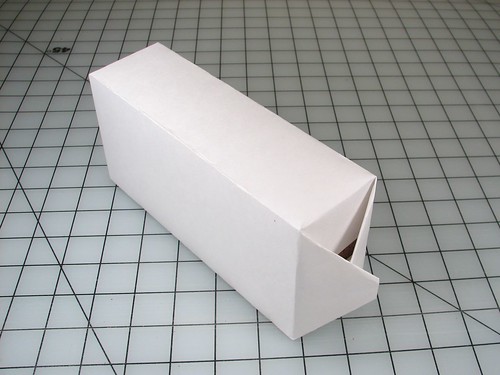 Fold down the ends just as you would for wrapping a present.
Fold down the ends just as you would for wrapping a present.
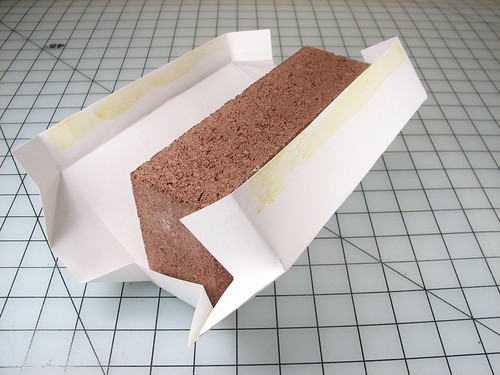 You can use tape or any glue you like for holding the paper on. We used contact cement for total overkill; duct tape would probably also be overkill.
You can use tape or any glue you like for holding the paper on. We used contact cement for total overkill; duct tape would probably also be overkill.
 Repeat for the second brick.
Repeat for the second brick.
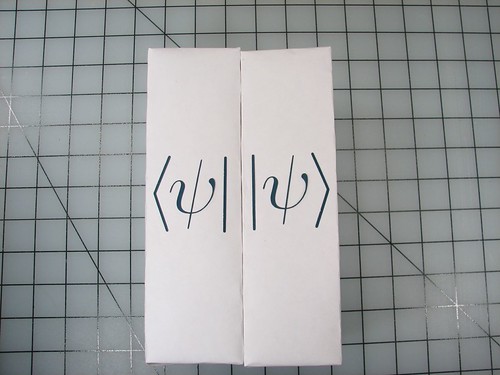 There are any number of ways to get your artwork in place– laser printer, modge podge, cut and paste, etc.
There are any number of ways to get your artwork in place– laser printer, modge podge, cut and paste, etc.
We chose cut and paste– which is a bit insane for skinny little pieces like these, but we did it anyway. The pattern was designed in an online LaTeX equation editor that can generate a PDF output. After cutting out the pieces we mocked them up in place to see where they would go when we applied the glue.
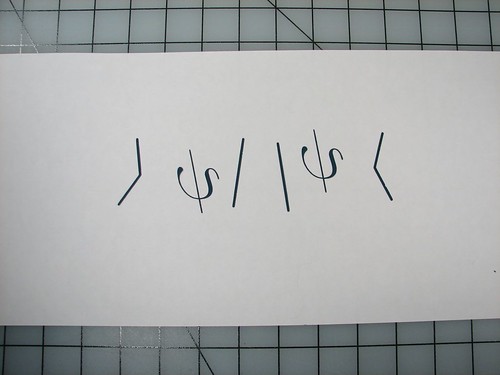 Lay out the pieces to glue upside down. Freezer paper is a nice material for a gluing prep area because of the slick surface.
Lay out the pieces to glue upside down. Freezer paper is a nice material for a gluing prep area because of the slick surface.
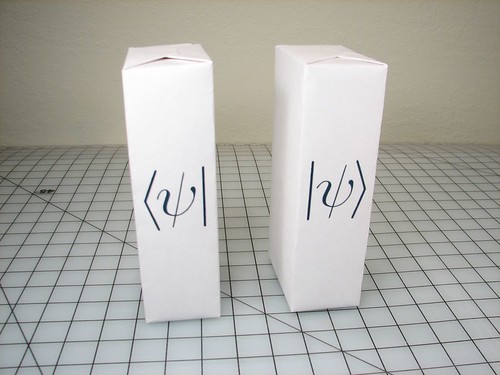 And install on the shelf. Cat optional.
And install on the shelf. Cat optional.




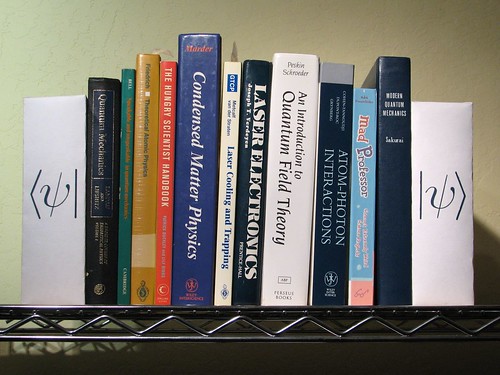
Nice. I use granite road bricks for smaller format books.
<books> and </books>
With heavy paper, if you draw a line, pressing hard, where the fold will go, it will score the paper, and you will have really clean creases. Try it.
—
Geeky100
It’s too bad there isn’t an easy transform for the expression presented in the first photograph.
I mean, the part between the brackets simultaneously: 1) Contains several items that are mind-warping, 2) fails to be internally self-consistent, and 3) (the worst crime-against-math) is highly unlikely to reduce to any of the helpful and desired solutions (0,1,e,pi,h, h-bar, etc.) ;)
The trouble with quantum mechanics texts is that everything is too easy– they only ask questions for which there are solutions. ;)
—
Windell H. Oskay
drwho(at)evilmadscientist.com
http://www.evilmadscientist.com/
But the methods are just as applicable to non-analytically soluble problems!
I have more Quantum Mechanics (QM) books than Windell does. Yeah!
No seriously, there are very few unsolved mysteries in QM. Of all the major fields of physics, statistical, mechanical, electromagnetic, and cosmology, QM solves, in my opinion, a huge number of physically interesting problems compared to the other fields.
For decades (almost a century) people have struggled with the measurement problem and the classical-quantum (decoherence) problem. Also, unless interactions and/or nonlinear dynamics are involved, very few scientist are interested in pursuing experiments of any kind any more (and that goes for most areas of physics).
Great book ends!
Kevin
What makes you think that this is all my QM books? ;)
—
Windell H. Oskay
drwho(at)evilmadscientist.com
http://www.evilmadscientist.com/
OH SNAP!!
i made some…
http://blog.kennerroad.com/2009/10/handmade-bookends/
celeste
lol, this really takes the biscuit! I love physics geeks they are the cutest!
Its wonderufll to be a physician.
My Copy: http://www.flyerman.org/fun/physikerhumor/